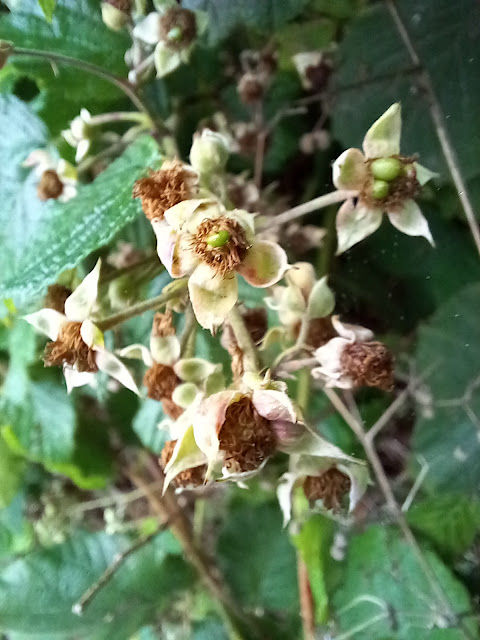Is it all a front
Pictures: a basically sterile bramble thicket, near Beckington (Somerset). John Norton (on the Facebook Brambles Group) told me that it's in Section Corylifolii of Rubus fructicosus agg (Brambles, Blackberries).... I suppose the name means that the leaves -- or rather, leaflets -- have a certain resemblance to hazel leaves; these ones definitely do. Other names in the myriad world of brambles include Rubus ulmifolius (i.e. like elm leaves: this is the most common species, and it's also the only one that reproduces sexually) and Section Glandulosus Series Rhamnifolii (which I assume means that the leaflets look like buckthorn leaves).
John's website is an inspiring and helpful guide to this world:
http://www.jnecology.uk/rubus/index.html
There are over 350 named species of bramble in the UK alone. Even so, names are only allocated when the same species can be recognized in several different places. Many local bramble forms are not assigned to a species, and that's particularly the case in Section Corylifolii, which are thought to originate as hybrids of Dewberry (Rubus caesius) with brambles (Rubus fructicosus agg.).
Section Corylifolii are known for their poor fruit production, though my plant seems quite extreme in that respect.
Words I learnt:
The individual segments of a blackberry are called "drupelets".
Leaflets that overlap each other are described as "imbricate", a word deriving from roof tiles (this is a distinctive feature of the Corylifolii).






0 Comments:
Post a Comment
<< Home